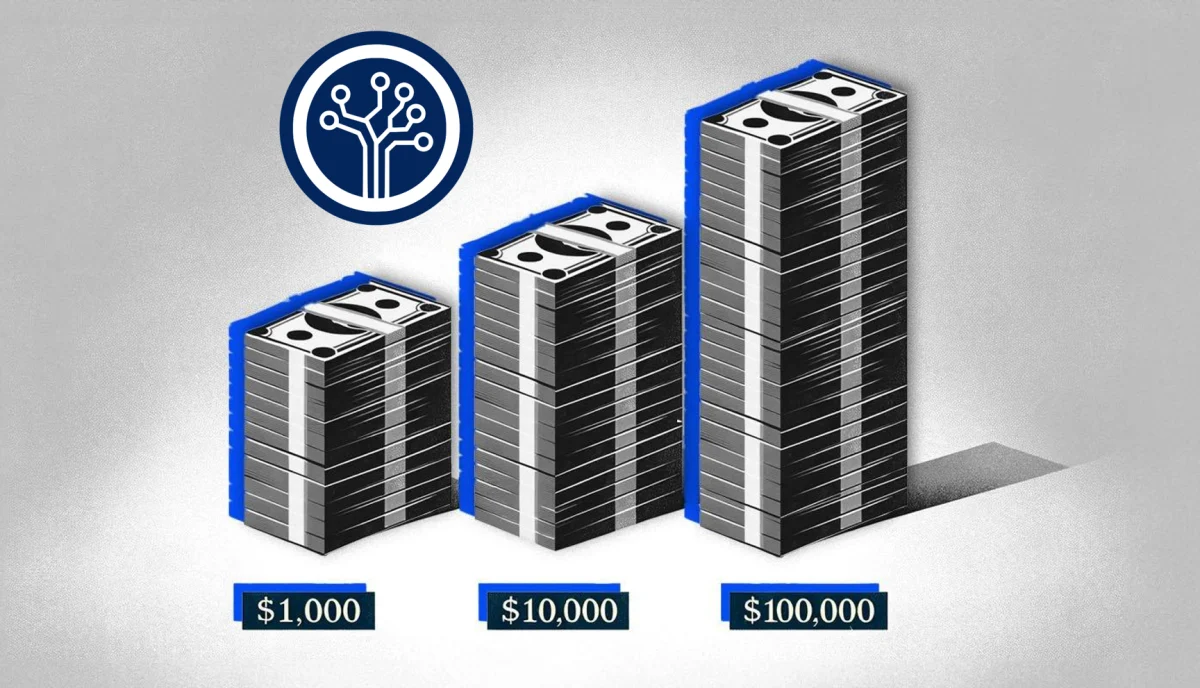How to build a portfolio for the long-term depends not just on your goals and constraints, but also on the amount of money you have to invest.
(To have this post read to you, click here)
There’s no “one-size-fits-all”; what’s important is to design a portfolio that it fits where you are today.
So let’s assume the following:
- You’ve got a relatively long investment horizon (10+ years) and won’t need to draw money along the way.
- You aim to make between 5% and 10% per year.
- You think you can stomach some bumps (not crashes) along the way.
- You’re looking for a mostly set-it-and-forget-it approach, one that doesn’t require constant moves in and out of assets, or tricky market-timing strategies.
- You don’t want your portfolio to rely too much on any single economic scenario, and want to keep it as “neutral” as possible.
The $1,000 portfolio
It’s probably not going to turn into a cool million overnight, but everyone must start somewhere.
With just $1,000, you firstly need to keep a close eye on trading fees (which can eat up a huge amount in relative terms). And that means keeping your plan focused. And if you think you can stay on track even if you suffer some losses, it may be worth taking a reasonably ambitious approach with your modest pot. And that means skewing more toward stocks.
The simplest, most efficient play for that amount of money is to put it all in a fund like the Vanguard Total World Stock ETF: It’s heavy on US big-cap stocks (hovering around 60%), but you’d still be getting a taste of global action, with 30% in big Asian and European companies. And with a lean expense ratio, you’d be paying almost nothing in yearly costs. Although it might not be the most exciting portfolio in the world, it’s probably going to give you the biggest bang for your buck given your budget and risk tolerance.
If you do want to try some stock-picking, you could consider splitting your bet – putting half in the ETF and half into two or three companies you like – ideally from different corners of the globe and different sectors. But let’s be realistic: outsmarting the simple ETF strategy is no easy task.
The $10,000 portfolio
More money gives you more options. If you’ve got $10,000 to invest, you’ll still want to be careful about keeping your costs down. Holding more than ten ETFs and rebalancing them once a year (at $10 each) would set your portfolio back by more than 1% annually, enough to make a dent in your long-term compounded return.
For the lion’s share of your portfolio, you’re probably thinking around 60% in stocks, and you might consider going for the Vanguard Total Stock Market ETF for some US exposure, the Vanguard FTSE Developed Markets ETF for shares of companies from across developed countries, and the Vanguard FTSE Emerging Markets ETF for emerging markets. One diversification option could 25% in US stocks, 25% in developed countries, and 10% in emerging markets.
To offset the stock-heavy tilt, pick government bonds. 20% of your portfolio could go half to the iShares 20+ Year Treasury Bond ETF (longer-dated US sovereign bonds) and half into the Vanguard Total International Bond ETF (high-quality government and corporate bonds from other countries).
That leaves you with another 20% to invest. Both stocks and bonds struggle in high inflation scenarios: carving out a 10% slice to put into commodities via the Invesco Optimum Yield Diversified Commodity Strategy No K-1 ETF is a smart option here. And then, there are the market’s wildcards – bitcoin and gold. You could decide to commit 5% of your portfolio to each, with the goal of hedging against the unpredictable effects that come from changes in central bank and government spending policies. It might be a controversial choice, but there aren’t many other assets that would do well if paper currencies start losing their value. You can use the iShares Bitcoin Trust Registered for bitcoin and the abrdn Physical Gold Shares ETF for gold.

For those who want a completely hands-off approach, the iShares Core Growth Allocation ETF, which invests 65% of the fund in stocks and 35% in bonds, or the iShares Core Aggressive Allocation ETF, which holds 80% in stocks and 20% in bonds, are easy, almost all-in-one funds. They’re not as robust as the DIY version – and they don’t have any commodities or crypto – but for a straightforward, low-effort investment, they’re not a terrible option.
The $100,000 portfolio
The bulk of your portfolio will look a lot like the $10,000 portfolio. But you’ve now got the money to make more calculated bets and add extra layers of diversification.
For instance, you could consider adding stocks trading at attractive valuations, like global, small-cap value stocks, such as the ones captured in the Dimensional International Small Cap Value ETF. A 5% allocation is a decent starting point.
You could also invest in real estate via a cheap, diversified option like the Vanguard Real Estate ETF. That’s another 7.5%. You may also want to consider devoting 5% to an emerging markets bond ETF like the Vanguard Emerging Markets Government Bond ETF.
To add resilience, an option is adding a trend-following strategy that can go both “long” (profiting from up markets) and “short” (profiting from down markets) across different assets. This strategy tends to work particularly well when more conventional strategies falter, so it makes a great portfolio diversifier. Putting 5% into – for example – the KFA Mount Lucas Managed Futures Index Strategy ETF is a solid strategy here.

So, what is next?
There’s no universal, “perfect” portfolio. You may want to change up some of the assets or tweak their weightings. You can use the portfolio examples above as a starting-off point, and adjust it based on your beliefs, goals, and constraints.
It’s important to note however that those portfolios aren’t “all-weather” solutions – meaning, they’re unlikely to perform well in the most challenging macroeconomic environments. They’re designed for that longer-term investor who has an appetite for risk, after all. But they’re arguably a much more robust option than a portfolio that’s invested exclusively in stocks – and US stocks, in particular. They’re a well-considered middle ground – a reasonable path that balances potential risks and rewards.



